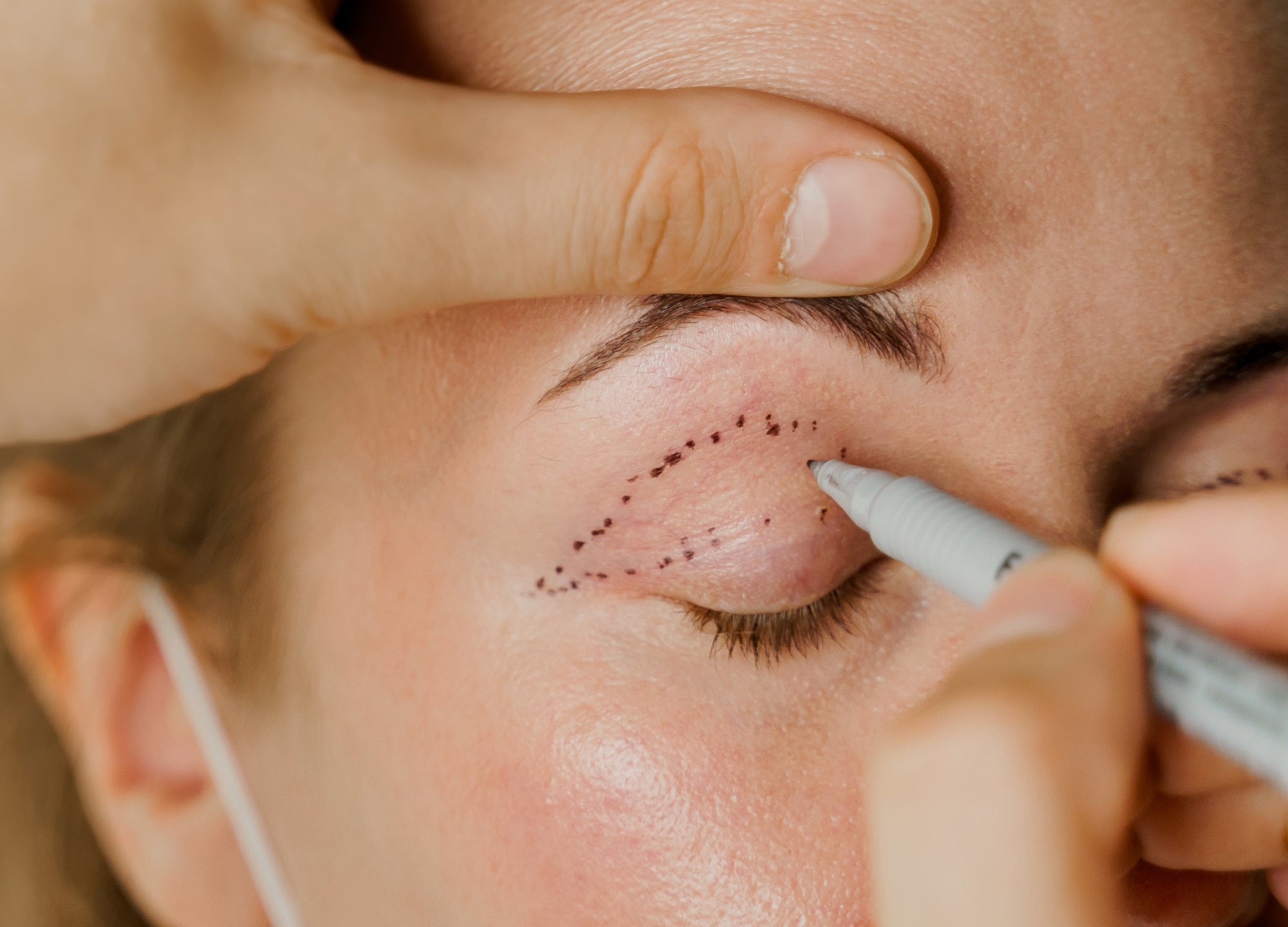If the eyes are the windows to your soul, then the eyelids just may be the windows to your true age. Whether you have laxity and droopiness on top or bulging fat pads underneath, no procedure can better address the various signs of aging eyes than eyelid surgery, aka blepharoplasty. It continues to grow in popularity, even among a younger patient population, largely because it can treat non-aging-related issues too. And it’s also worth mentioning that the majority of people who undergo the surgery are very happy with the results. It’s one of the procedures with the highest patient-satisfaction rate, says Dr. Christopher Zoumalan, a board-certified oculoplastic surgeon in Beverly Hills, California. (Among RealSelf members, eyelid surgery has an impressive 93% Worth It Rating.)
Of course, that’s only when it’s performed correctly. The unique anatomy of the eye, coupled with the fact that the function of the eye needs to be maintained, makes it essential to find a surgeon who understands not only plastic surgery but also the health of the eye, Dr. Zoumalan points out. The ideal surgeon should have expertise in dealing with all kinds of anatomy and use minimally invasive techniques that help achieve safe and natural blepharoplasty results along with a quicker recovery, agrees Dr. Mehryar (Ray) Taban, a board-certified oculoplastic surgeon in Beverly Hills, California.
In short, the potential problems associated with blepharoplasty can affect both the cosmetic outcome and the functionality of your eyes. Here, more on seven possible pitfalls that can occur if an upper and/or lower blepharoplasty isn’t performed correctly.
Upper eyelid surgery risks
Scarring
“In general, eyelid incisions heal incredibly well compared to other places on the face or body,” says Dr. Zoumalan. “This is because the skin is thin and there’s minimal tension, which tend to make for thinner, flatter, less pigmented scars,” he explains. However, improper suturing and/or a lack of postoperative wound care can potentially lead to visible, long-term scarring. “Scar formation on the upper eyelid can present as either hypo- or hyperpigmentation and be difficult to hide,” says Dr. Robert Schwarcz, a double board-certified oculofacial plastic surgeon in New York City. It can be treated, though it may require laser therapy or re-excision, he adds.
Dry eyes
While this is a potential problem for both upper and lower blepharoplasties, Dr. Zoumalan says it’s more likely to occur in the former. Lower eyelid surgery often involves a transconjunctival approach, where an incision is made on the back surface of the eyelid. On the flip side, when you’re cutting through the upper eyelid, you’re cutting through skin and muscle. “That incision alone traumatizes the nerves so that you can’t blink as effectively after surgery,” he explains. Temporary dryness and/or tearing for a few weeks post-op is normal and to be expected, but it can become chronic. This is much more likely in patients who have active dry eyes—meaning they wake up with scratchy, dry eyes in the morning–to begin with, he says, adding that he won’t operate on anyone who doesn’t have their eye dryness managed.
Asymmetry
Some asymmetry—even after a perfectly performed upper blepharoplasty—is always a possibility. “Your eyelids are like siblings, not twins. They heal differently, and so there may be some subtle differences in how they look,” says Dr. Zoumalan. When there’s dramatic asymmetry after surgery, it’s most often due to the fact that other factors weren’t taken into consideration beforehand—more specifically, brow asymmetry, notes Dr. Schwarcz. Dr. Zoumalan says that’s why it’s essential to be candid with patients and make sure they have realistic expectations. “You have to have a detailed discussion about the limitations of upper lid surgery when someone has asymmetrical brows,” he says.
Inability to close the eyes
“This can occur due to the excessive removal of skin or a very aggressive surgical touch and scarring in the deep layers that causes a retraction of the upper eyelid,” explains Dr. Schwarcz. This is perhaps the most serious and devastating complication, as it can lead to not only dry eyes but even eventual corneal ulceration and loss of the eye, he says. A skin graft is typically needed to treat this.
Lower eyelid surgery risks
Eyelid retraction
As is the case with the upper lid, lower eyelid retraction can lead to tearing, discomfort, asymmetry or the inability to fully close the eye, says Dr. Schwarcz. It also creates a strange appearance to the eye, rounding out the outer corner, he adds. Excessive manipulation of the lower eyelid muscle and/or an overly aggressive surgical technique can cause this, though Dr. Taban notes that patients who have bulging eyes are at higher risk of this occurring.
Eyelid ectropion
This is a condition in which the eyelid turns outward. It can happen during a lower blepharoplasty when the lower lid gets pulled away from the eyeball, says Dr. Taban. Again, an improper, aggressive surgical technique is to blame, although older patients whose skin is generally weaker are also more at risk, he explains.
Contour irregularities
Removing too much fat can leave the undereye area looking sunken and hollow. Not removing enough fat can create the appearance of bulges. Either one can make the under-eye area look irregular after surgery, says Dr. Schwarcz. He adds that fat or filler can be added, to fill in hollowing, or more fat removed, to smooth out bulging. However, Dr. Zoumalan adds that in order to avoid either scenario, fat repositioning is often a better option than fat removal during a lower blepharoplasty.











